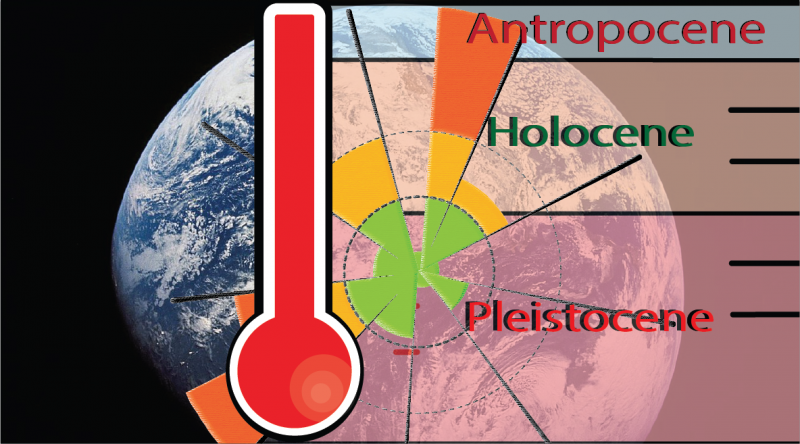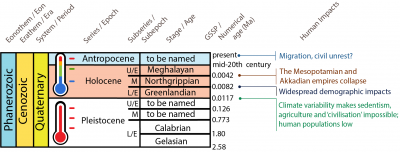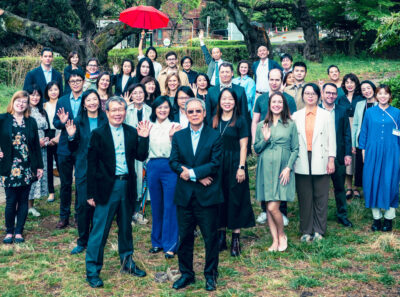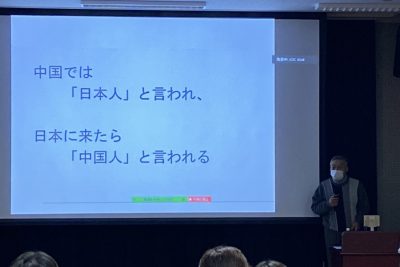Learning from the past? Long-term socio-ecological trajectories towards and beyond planetary boundaries

Author:
|
Felix RIEDE Professor of Climate Change Archaeology at Aarhus University |

|
Already long before the emergence of our own species Homo sapiens did humans modify their environment. As significant as they were for those early humans, such modifications were initially of a strictly local and ephemeral character. With the advent of fire control and ever-more sophisticated technologies, however, such modifications were beginning to impact other species. Humans learned to, quite literally, construct their own niches and so to substantially expand their own operating spaces on this planet; this notion has been formalized by biologists under the label of niche construction theory (1). As our evolutionary cousins one by one went extinct – most often due to changing climates – our own niche kept expanding often at the cost of especially large mammals (2, 3). When the cold and difficult-to-predict climate regime of the Pleistocene gave way to the much more stable and warm conditions of the Holocene around 11,700 years ago, human populations grew almost everywhere and agricultural economies were increasingly being adopted; plants and animals were domesticated (4) and land-cover became anthropogenically modified (5). Humans had taken the first firm on the pathway towards planetary boundaries.
By the Late Holocene, land-cover changes – mostly brought about by woodland clearance for agriculture and pasture – had reached such an extent that carbon emissions impacted global climate trajectories through feedback processes (6). The origin of niche modifications was always local, always rooted in people on the ground living in their own present. The unintended consequences unfolded at much larger scales, however, and over timescales that far transcended the lifetimes of those initial niche constructors. And despite the fact that Holocene climate was on the whole rather stable, human societies were again impacted by dramatic changes in climate. Aberrant cold spells led to significant population fluctuations (7), major ‘civilizations’ were repeatedly brought down by prolonged drought (8) and climate changes brought about by volcanic eruptions in, for instance, the 6th century CE led to major geopolitical cascades that more than hint at complex socio-ecological systems that had become critically vulnerable to such disturbances (9). Risks had become systemic and impacts unevenly distributed across social strata.
Research focused on the historical trajectories of socio-ecological systems highlights that as societies become more populous, more technologically entrenched, more connected and more interdependent, their susceptibility to collapse also increased. While ‘societal collapse’ should not be read to imply mass death, past climate-induced socio-ecological shocks often did lead to systemic breakdown and were more often than not accompanied with substantial – and by modern ethical standards unacceptable – losses of lives and livelihoods (10). Can we learn lessons from such past instances where human societies approached and exceeded their local or regional safe and just operating spaces?
Humans have long been constructing their own niche. Today, the scale of these modifications is no longer merely local or regional, it is planetary. The biodiversity loss, changes, physical and chemical impacts in the terrestrial and marine realms that are alarmingly increasing are extensions of this very same process (11). Yet, despite our technological ingenuity our own safe operating space on Planet Earth, has geographically and in relation to the climate regimes of the Holocene been rather stable across the last many millennia. Severe problems emerge on the horizon when the likely climate changes of the Anthropocene times ahead are projected onto this distribution (12). Such analyses highlight that, in the absence of rapid intervention, many parts of Planet Earth will become uninhabitable, with ensuing impacts on lives and livelihoods. Furthermore, insights from past episodes of climate change and how humans coped with them strongly implies that such climate changes will lead to major migrations, which in turn will impact even those regions not affected by climate change directly.
The signature of human niche construction now extends beyond the planetary boundaries of Earth (13) and rapidly reaching the limits of what this planet can absorb in terms of human disturbance. The niche construction framework discussed here is now widely applied in biodiversity and earth system science studies (14–17) as well as in the human sciences (18, 19). In the framework of niche construction, unintended consequences affect both the constructor as well as other organisms play an important role. These consequences may be beneficial for some and over certain timescales but may ultimately be detrimental, even for the constructor or the constructor’s descendants. As in the past, most people do not intend to modify Planet Earth in such a way that it impacts plants, animals or other humans negatively – yet we all keep doing so. A deep historical perspective can here inform us about the causes and consequences of human actions and highlight the long-term impacts of pushing the boundaries of our safe and just operating spaces, be they local, regional or planetary. The human past also serves as an archive of case studies of human socio-ecological interactions, of successes and of failures. These case studies may teach us important lessons and they may make for powerful communicative devices in trying to translate often abstract scientific insights about planetary processes into local frameworks of understanding and, not least, into action.
References:
- J. F. Odling-Smee, K. N. Laland, M. W. Feldman, Niche Construction. The Neglected Process in Evolution (Princeton University Press, Princeton, NJ, 2003).
- A. Mondanaro, M. Melchionna, M. D. Febbraro, S. Castiglione, P. B. Holden, N. R. Edwards, F. Carotenuto, L. Maiorano, M. Modafferi, C. Serio, J. A. F. Diniz-Filho, T. Rangel, L. Rook, P. O’Higgins, P. Spikins, A. Profico, P. Raia, A Major Change in Rate of Climate Niche Envelope Evolution during Hominid History. iScience. 23, 101693 (2020).
- C. Sandom, S. Faurby, B. Sandel, J.-C. Svenning, Global late Quaternary megafauna extinctions linked to humans, not climate change. Proceedings of the Royal Society B: Biological Sciences. 281 (2014), doi:10.1098/rspb.2013.3254.
- M. A. Zeder, Domestication as a model system for niche construction theory. Evolutionary Ecology. 30, 325–348 (2016).
- L. Stephens, et al. Archaeological assessment reveals Earth’s early transformation through land use. Science. 365, 897 (2019).
- W. F. Ruddiman, D. Q. Fuller, J. E. Kutzbach, P. C. Tzedakis, J. O. Kaplan, E. C. Ellis, S. J. Vavrus, C. N. Roberts, R. Fyfe, F. He, C. Lemmen, J. Woodbridge, Late Holocene climate: Natural or anthropogenic? Reviews of Geophysics. 54, 93–118 (2016).
- M. A. Manninen, M. Tallavaara, H. Seppä, Human responses to early Holocene climate variability in eastern Fennoscandia. Quaternary International. 465, 287–297 (2018).
- H. Weiss, Megadrought and Collapse: From Early Agriculture to Angkor (Oxford University Press, Oxford, 2017; https://www-oxfordscholarship-com.ez.statsbiblioteket.dk:12048/view/10.1093/oso/9780199329199.001.0001/oso-9780199329199).
- U. Büntgen, V. S. Myglan, F. C. Ljungqvist, M. McCormick, N. Di Cosmo, M. Sigl, J. Jungclaus, S. Wagner, P. J. Krusic, J. Esper, J. O. Kaplan, M. A. C. de Vaan, J. Luterbacher, L. Wacker, W. Tegel, A. V. Kirdyanov, Cooling and societal change during the Late Antique Little Ice Age from 536 to around 660 AD. Nature Geosci. 9, 231–236 (2016).
- J. A. Tainter, Archaeology of Overshoot and Collapse. Annual Review of Anthropology. 35, 59–74 (2006).
- A. Meneganzin, T. Pievani, S. Caserini, Anthropogenic climate change as a monumental niche construction process: background and philosophical aspects. Biology & Philosophy. 35, 38 (2020).
- C. Xu, T. A. Kohler, T. M. Lenton, J.-C. Svenning, M. Scheffer, Future of the human climate niche. Proc Natl Acad Sci USA. 117, 11350 (2020).
- A. Gorman, in An Insider’s Guide to a Rapidly Changing Planet, P. Tortell, Ed. (Open Book Publishers, Cambridge, 2020; https://www.openbookpublishers.com/10.11647/obp.0193.pdf), pp. 239–245.
- E. C. Ellis, Ecology in an anthropogenic biosphere. Ecological Monographs. 85, 287–331 (2015).
- E. C. Ellis, P. K. Haff, Earth Science in the Anthropocene: New Epoch, New Paradigm, New Responsibilities. Eos, Transactions American Geophysical Union. 90, 473–473 (2009).
- B. Matthews, L. De Meester, C. G. Jones, B. W. Ibelings, T. J. Bouma, V. Nuutinen, J. van de Koppel, J. Odling-Smee, Under niche construction: an operational bridge between ecology, evolution, and ecosystem science. Ecological Monographs. 84, 245–263 (2014).
- D. Corenblit, A. C. W. Baas, G. Bornette, J. Darrozes, S. Delmotte, R. A. Francis, A. M. Gurnell, F. Julien, R. J. Naiman, J. Steiger, Feedbacks between geomorphology and biota controlling Earth surface processes and landforms: A review of foundation concepts and current understandings. Earth-Science Reviews. 106, 307–331 (2011).
- F. Riede, in Handbook of Evolutionary Research in Archaeology, A. M. Prentiss, Ed. (Springer International Publishing, Cham, 2019; https://doi.org/10.1007/978-3-030-11117-5_17), pp. 337–358.
- N. L. Boivin, M. A. Zeder, D. Q. Fuller, A. Crowther, G. Larson, J. M. Erlandson, T. Denham, M. D. Petraglia, Ecological consequences of human niche construction: Examining long-term anthropogenic shaping of global species distributions. Proceedings of the National Academy of Sciences. 113, 6388–6396 (2016).
Felix Riede is Professor of Climate Change Archaeology at Aarhus University in Denmark, and part of the core group of the Center for Biodiversity Dynamics in a Changing World (BIOCHANGE) as well as co-chair of Future Earth’s Knowledge-Action Network on Extreme Events and Emergent Risks (Risk-KAN). His research is focused on human-environment interactions and niche construction from deep time to the present. A particular focus rests on extreme events and emergent risks and he has long worked on the impacts of natural hazards on past human societies with an eye towards using such cases for constructing evidence-base scenarios for future impacts. Within the Risk-KAN, Professor Riede convenes the working group ‘past4future’.









